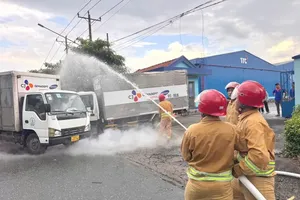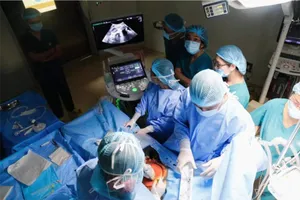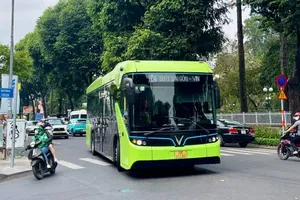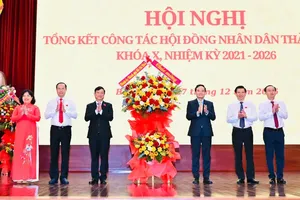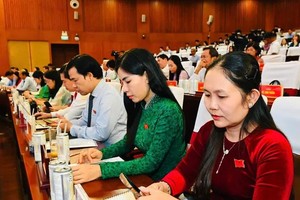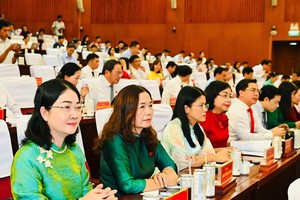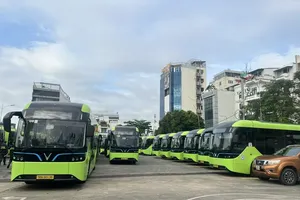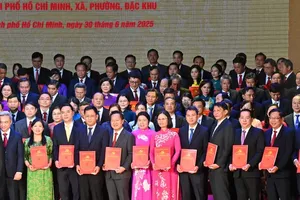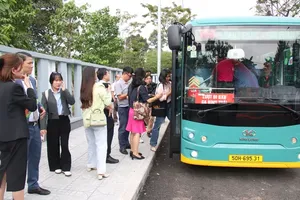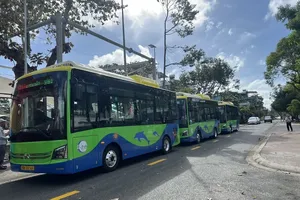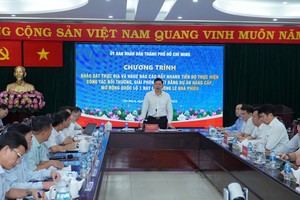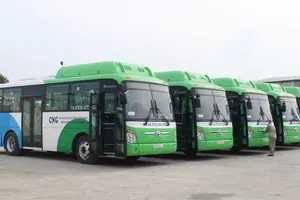
The Government has issued a comprehensive directive compelling 2,166 entities to conduct mandatory greenhouse gas (GHG) inventories, representing a substantial increase of 254 entities compared to the previous year. This forceful measure underscores Vietnam's unwavering commitment to achieving net-zero emissions by 2050 and positions the nation as a frontrunner in the burgeoning global carbon credit market.
Among the designated entities, HCMC alone encompasses over 200 enterprises and manufacturing facilities. Numerous businesses have already embarked on strategic planning to fulfill the GHG inventory mandate.
For instance, during an inspection of a fiber production line at No. 28 One-membered Co. Ltd, Nguyen Viet Tuan, the company's environmental engineer, delineated a detailed plan for implementing the GHG inventory. This involves collaborating with the Vietnam-Russia Center to assess fuel consumption, waste management processes, and wastewater treatment throughout the production cycle. Subsequent to data collection, the company will meticulously evaluate and implement suitable technological adaptations.
Another typical example of GHG inventory is Trang Bang Manufacturing Plant under Soi The Ky JSC, located in Tay Ninh Province. Its Strategy Director Nguyen Phuong Chi informed that in early 2024, the plant partnered with the World Wildlife Fund in Vietnam and the Energy Efficiency Research and Development Center as consulting entities to undertake the GHG inventory.
Through a comprehensive assessment of 2023 data, the consulting firm compiled a report quantifying the total GHG emissions at 52,904.63 tons of CO2. Furthermore, the consultants offered a suite of energy-saving and GHG reduction strategies. After a thorough evaluation, Soi The Ky JSC selected optimal solutions to be implemented from 2024 to 2028, projecting annual cost savings of VND6.9 billion (US$281,000) and a 30.1-percent reduction in emissions.
In another story, Production Director and Net-Zero Project Manager at Vinamilk Le Hoang Minh revealed that the company commenced GHG inventories for its manufacturing plants in 2022. Subsequent to these assessments, Vinamilk has integrated various eco-friendly practices into its production processes, contributing to a reduction in CO2 emissions.
In 2023, the company achieved a 3-percent decrease in emissions per ton of product compared to the previous year. Notably, the adoption of autonomous robots in Vietnamese dairy plants has led to a 62-percent reduction in emissions relative to traditional forklifts, while the utilization of intelligent warehouses has yielded an 83-percent reduction compared to conventional warehouses.
Several enterprises have encountered challenges in the formulation and execution of GHG inventory plans, including a dearth of specific guidelines from regulatory authorities, escalating costs associated with technological transitions, and misaligned implementation timelines.
Leveraging its successful experience in GHG inventories, Soi The Ky JSC highlighted specific difficulties, such as the time-consuming process of furnishing data and documents pertaining to electricity, water, and fuel oil consumption for the reporting year. Even the consulting firms encountered difficulties in accurately identifying emission sources.
According to Director Le Hoang Minh, Vinamilk experienced relative ease in conducting Scope 1 and 2 GHG inventories (direct emissions) due to the digitalization of its plants and the implementation of energy monitoring systems. However, Scope 3 emissions (indirect emissions) presented significant challenges, not only for the company but also for the assessment entities, owing to the lack of clarity regarding emission factors of raw materials throughout the production and distribution processes.
Deputy Director Nguyen Tuan Quang of the Department of Climate Change (under the Ministry of Natural Resources and Environment) acknowledged the obstacles to the smooth implementation of GHG inventories. Notably, regulatory agencies have been remiss in providing timely guidance on GHG inventories and mitigation measures for enterprises, a dearth of suitable support tools, and ineffective implementation of guidance activities. Moreover, existing regulations have not fully aligned with real-world conditions.
To address these challenges, Nguyen Tuan Quang proposed amendments to regulations governing GHG inventory implementation for entities allocated emission allowances, as well as revisions to regulations pertaining to the assessment of GHG inventory results to facilitate the allocation of emission allowances and the verification of GHG emission reduction results for carbon credit generation.
Director Nguyen Toan Thang of the HCMC Department of Natural Resources and Environment announced that the department is collaborating with the Department of Finance to finalize a pilot project on the financial mechanism for implementing GHG emission reduction measures through carbon trading. GHG inventories serve as the cornerstone for establishing a carbon market. Consequently, HCMC is committed to enhancing the capacity of its officials through training and workshops on GHG inventory procedures.
Furthermore, the city will provide unwavering support to enterprises through consulting, training, and technological innovation initiatives. The implementation of GHG inventories not only mitigates the adverse impacts of climate change but also presents lucrative opportunities to attract investments in carbon credit trading.
